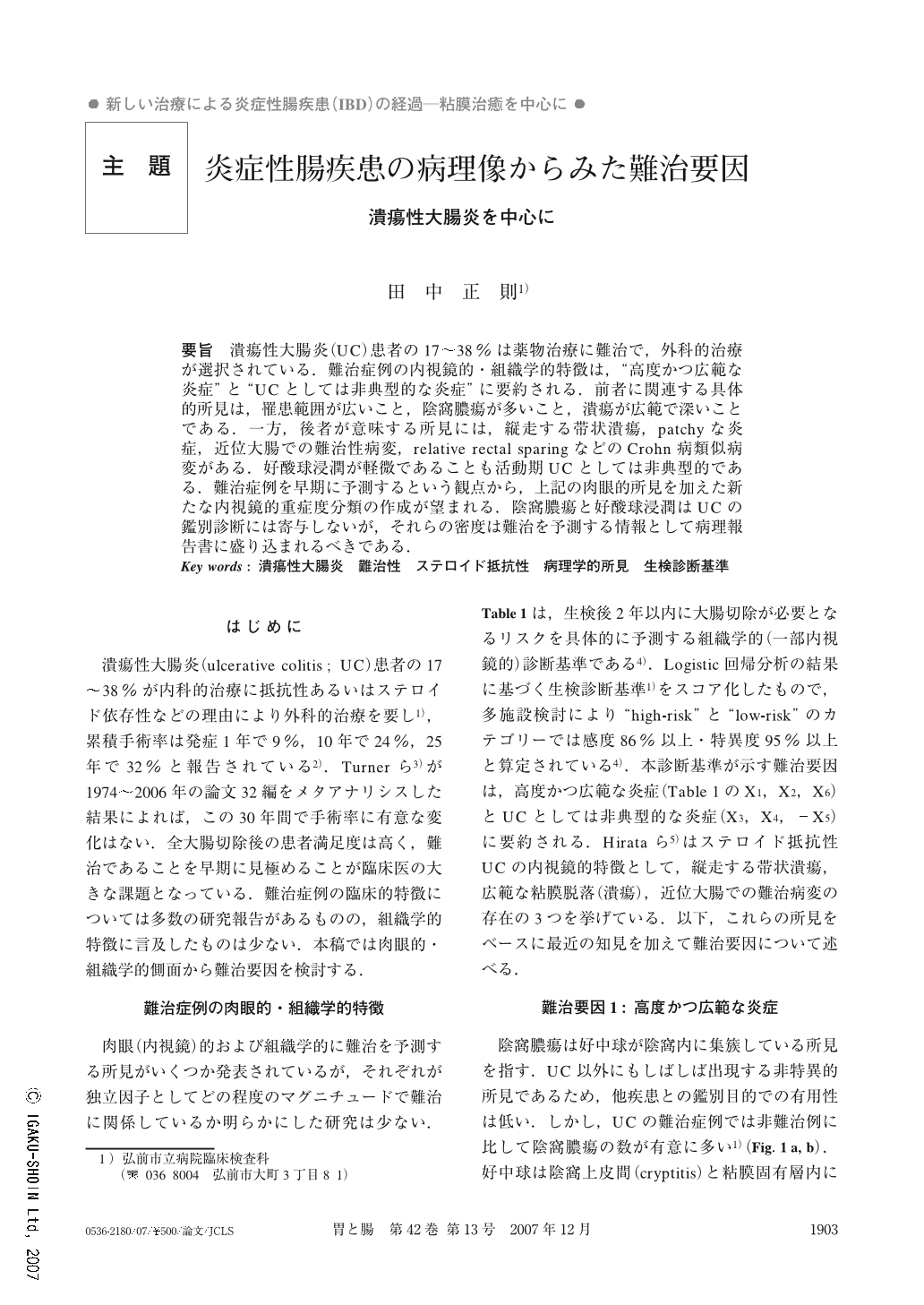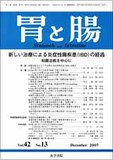Japanese
English
- 有料閲覧
- Abstract 文献概要
- 1ページ目 Look Inside
- 参考文献 Reference
- サイト内被引用 Cited by
要旨 潰瘍性大腸炎(UC)患者の17~38%は薬物治療に難治で,外科的治療が選択されている.難治症例の内視鏡的・組織学的特徴は,“高度かつ広範な炎症”と“UCとしては非典型的な炎症”に要約される.前者に関連する具体的所見は,罹患範囲が広いこと,陰窩膿瘍が多いこと,潰瘍が広範で深いことである.一方,後者が意味する所見には,縦走する帯状潰瘍,patchyな炎症,近位大腸での難治性病変,relative rectal sparingなどのCrohn病類似病変がある.好酸球浸潤が軽微であることも活動期UCとしては非典型的である.難治症例を早期に予測するという観点から,上記の肉眼的所見を加えた新たな内視鏡的重症度分類の作成が望まれる.陰窩膿瘍と好酸球浸潤はUCの鑑別診断には寄与しないが,それらの密度は難治を予測する情報として病理報告書に盛り込まれるべきである.
Patients with ulcerative colitis (UC) follow various clinical courses and 17% to 38% ultimately require surgery. Endoscopic and histologic features associated with refractory UC are crudely divided into “severe and extensive inflammation” and ”inflammation unlike typical UC”. The former includes pancolitis, numerous crypt abscesses, extensive mucosal abrasion, and deep ulcers. The latter includes longitudinal ulcers, patchy inflammation, refractory lesions in the proximal colon, and relative rectal sparing, all of which are features reminiscent of Crohn's colitis. Paucity of eosinophils in the diseased mucosa also suggests a refractory course. Future endoscopic criteria predicting refractory UC have to include the above macroscopic features, and the densities of crypt abscesses and eosinophils should be incorporated into the pathology report.

Copyright © 2007, Igaku-Shoin Ltd. All rights reserved.


